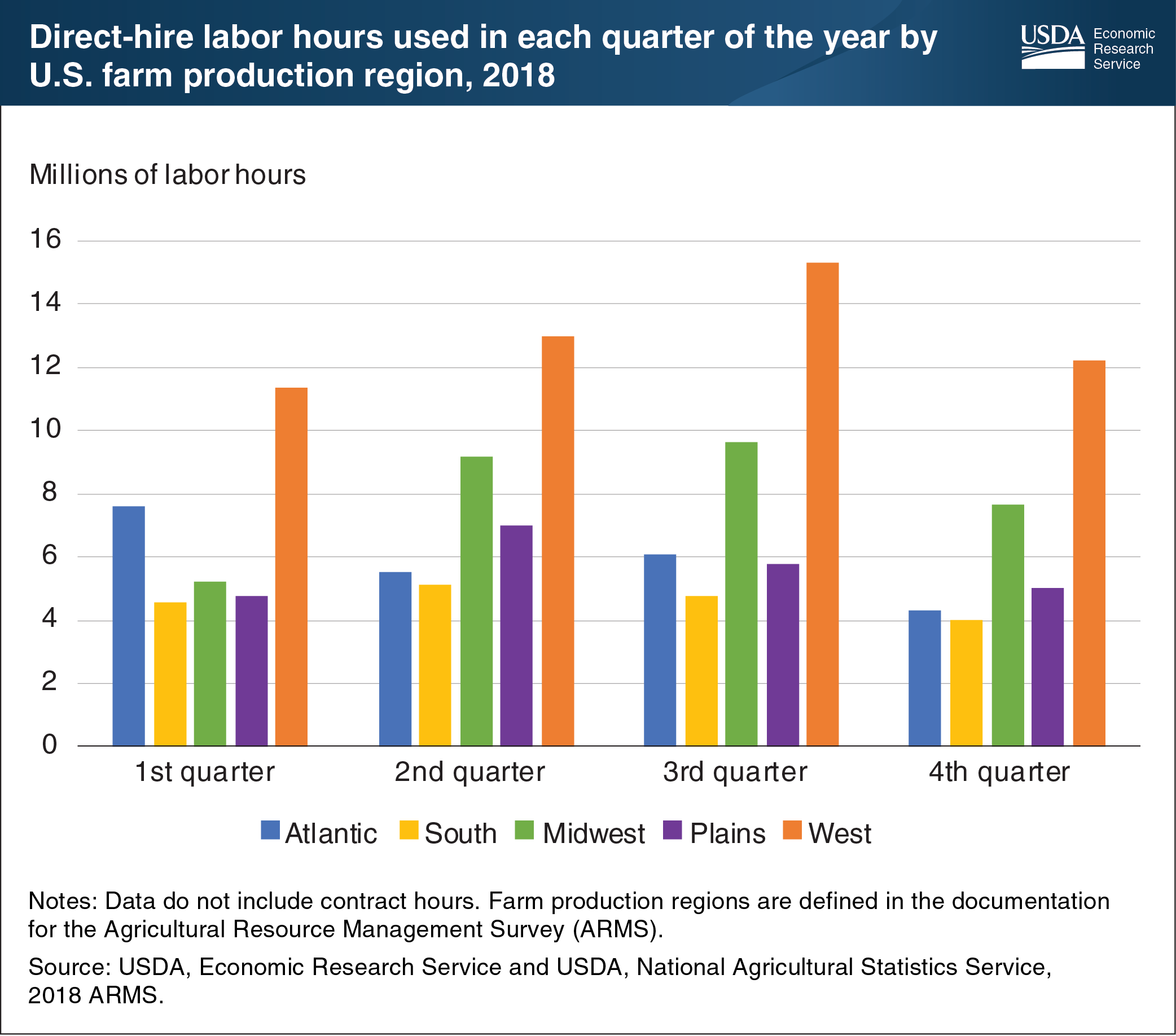Demand for direct-hire labor in agriculture is seasonal
- by Dipak Subedi and Anil K. Giri
- 8/5/2020

The ongoing COVID-19 pandemic has decreased labor availability in many sectors of the economy. In agriculture, labor inputs consist of unpaid farm operator labor (including spouse and family labor), direct-hire labor, and labor contracted through a third party. In 2018, 62 percent of total farm labor hours were unpaid, while the remaining 38 percent were paid. The majority (82 percent) of labor expenditures were to compensate hired employees, while 18 percent were spent on contracted labor. Paid labor hours are concentrated in certain time periods and regions, largely reflecting the importance and cyclicality of specialty crop production (which includes fruits, vegetables, and nursery crops). In the Atlantic region, paid labor hours peaked in the first quarter, whereas in the rest of the country, labor hours peaked in the second or third quarters. The Western region of the United States accounted for 35 percent of total employee labor hours, and the bulk of labor hours (37 percent) were recorded in the third quarter. If last year’s patterns hold, demand for farm-employed labor in the West could steadily increase and peak in the summer months. While the data in this chart predate the COVID-19 pandemic, agricultural workers have been deemed essential and information on the demand for these workers can provide insight into the potential impacts of the pandemic. This chart is based on data from the Economic Research Service data product, ARMS Farm Financial and Crop Production Practices, updated July 2020.

